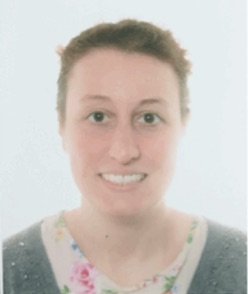Studiare
In questa sezione è possibile reperire le informazioni riguardanti l'organizzazione pratica del corso, lo svolgimento delle attività didattiche, le opportunità formative e i contatti utili durante tutto il percorso di studi, fino al conseguimento del titolo finale.
Calendario accademico
Il calendario accademico riporta le scadenze, gli adempimenti e i periodi rilevanti per la componente studentesca, personale docente e personale dell'Università. Sono inoltre indicate le festività e le chiusure ufficiali dell'Ateneo.
L’anno accademico inizia il 1° ottobre e termina il 30 settembre dell'anno successivo.
Calendario didattico
Il calendario didattico indica i periodi di svolgimento delle attività formative, di sessioni d'esami, di laurea e di chiusura per le festività.
| Periodo | Dal | Al |
|---|---|---|
| Lezioni 1 Semestre CLID VR | 1-ott-2018 | 21-dic-2018 |
| Lezioni 2 Semestre CLID VR | 4-mar-2019 | 3-mag-2019 |
Calendario esami
Gli appelli d'esame sono gestiti dalla Unità Operativa Segreteria Corsi di Studio Medicina.
Per consultazione e iscrizione agli appelli d'esame visita il sistema ESSE3.
Per problemi inerenti allo smarrimento della password di accesso ai servizi on-line si prega di rivolgersi al supporto informatico della Scuola o al servizio recupero credenziali
Per dubbi o domande leggi le risposte alle domande più frequenti F.A.Q. Iscrizione Esami
Docenti
 elisa.artegiani@univr.it
elisa.artegiani@univr.it
 giacomosebastiano.canova@univr.it
giacomosebastiano.canova@univr.it
 nicolo.cardobi@univr.it
nicolo.cardobi@univr.it
 pietro.liboni@univr.it
pietro.liboni@univr.it
 anja.meyer@univr.it
anja.meyer@univr.it
 maria.murgia@aovr.veneto.it
maria.murgia@aovr.veneto.it
 alessia.pardo@univr.it
alessia.pardo@univr.it
 elda.righi@univr.it
elda.righi@univr.it
 annarita.signoriello@univr.it
annarita.signoriello@univr.it
 ROMINA.VITA@libero.it
ROMINA.VITA@libero.it
 marghe.viviani@gmail.com
marghe.viviani@gmail.com
Piano Didattico
Il piano didattico è l'elenco degli insegnamenti e delle altre attività formative che devono essere sostenute nel corso della propria carriera universitaria.
Selezionare il piano didattico in base all'anno accademico di iscrizione.
1° Anno
| Insegnamenti | Crediti | TAF | SSD |
|---|
2° Anno Attivato nell'A.A. 2019/2020
| Insegnamenti | Crediti | TAF | SSD |
|---|
3° Anno Attivato nell'A.A. 2020/2021
| Insegnamenti | Crediti | TAF | SSD |
|---|
| Insegnamenti | Crediti | TAF | SSD |
|---|
| Insegnamenti | Crediti | TAF | SSD |
|---|
| Insegnamenti | Crediti | TAF | SSD |
|---|
Legenda | Tipo Attività Formativa (TAF)
TAF (Tipologia Attività Formativa) Tutti gli insegnamenti e le attività sono classificate in diversi tipi di attività formativa, indicati da una lettera.
Metodologia per una pratica professionale basata sulle evidenze (2020/2021)
Codice insegnamento
4S000290
Crediti
4
Coordinatore
Lingua di erogazione
Italiano
L'insegnamento è organizzato come segue:
Obiettivi formativi
Il corso copre i concetti fondamentali della statistica medica, in particolare la statistica descrittiva, e un’introduzione alla statistica inferenziale, ai concetti di verifica d’ipotesi e intervalli di confidenza. Una particolare attenzione sarà dedicata all’interpretazione dei dati utilizzando anche come strumento un software di elaborazione dell’informazione con l’intento di evidenziarne le particolarità d’uso nel campo clinico-medico.
MODULO SISTEMI DI ELABORAZIONE DELLE INFORMAZIONI Obiettivi formativi: Storia dell’evoluzione dei sistemi di elaborazione dell’informazione, studio di uno strumento software di elaborazione dell’informazione con l’intento di evidenziarne le particolarità d’uso nel campo clinico-medico.
MODULO STATISTICA SANITARIA ED EPIDEMIOLOGICA CLINICA Obiettivi formativi: Il corso copre i concetti fondamentali della statistica medica, in particolare la statistica descrittiva, e un’introduzione alla statistica inferenziale, ai concetti di verifica d’ipotesi e intervalli di confidenza. Inoltre il corso presenta anche i concetti base dell’epidemiologia, illustrando prevalenza, incidenza e le misure di associazione. Alla fine del corso gli studenti dovrebbero essere in grado di: descrivere i dati, per mezzo di misure di tendenza centrale e di variabilità; interpretare e comunicare in modo appropriato le informazioni riguardanti un collettivo di unità sperimentali o pazienti, raccolte nell’ambito di una ricerca clinica o epidemiologica in relazione a fenomeni biomedici; saper costruire ed interpretare una rappresentazione grafica di sintesi dei dati raccolti; conoscere e utilizzare le principali misure di frequenza e di associazione in campo epidemiologico. Sebbene siano presentate anche formule e metodi computazionali, una particolare attenzione sarà dedicata all’interpretazione dei dati.
Programma
------------------------
MM: STATISTICA SANITARIA ED EPIDEMIOLOGICA CLINICA
------------------------
La raccolta e organizzazione di dati biomedici: fasi di una ricerca statistica; popolazione, campione ed unità statistiche; misurazione di un fenomeno e scale di misura; frequenze assolute, relative e cumulate; tabelle di frequenza ad una e due vie.
La rappresentazione grafica di dati biomedici.
Misure di posizione e di variabilità.
Introduzione al calcolo delle probabilità: definizione, regole del calcolo delle probabilità, distribuzioni teoriche.
Gli oggetti dell’epidemiologia: outcome; misure di occorrenza; determinante.
La relazione di occorrenza: rischio attribuibile; rischio relativo, odds ratio.
Gli studi epidemiologici: studio ecologico; studio trasversale; studio caso-controllo; studio di coorte; sperimentazioni cliniche.
Introduzione all’inferenza statistica: stima puntuale; intervallo di confidenza; test statistico.
------------------------
MM: SISTEMI DI ELABORAZIONE DELLE INFORMAZIONI
------------------------
Introduzione al corso. I concetti di: dato, informazione e sistemi di elaborazione dell’informazione. La codifica e la strutturazione dell’informazione Dal dato all’informazione (Esercitazioni con Excel) L’elaborazione dell’informazione Le infrastrutture hardware Le infrastrutture software Le applicazioni Applicazioni web per la ricerca delle evidenze biomediche (Esercitazioni con PubMed e Cochrane).
Bibliografia
| Autore | Titolo | Casa editrice | Anno | ISBN | Note |
|---|---|---|---|---|---|
| Giuliani D, Dickson MM | Analisi statistica con Excel | 2015 | |||
| Lantieri PB, Risso D, Ravera G | Elementi di Statistica Medica | McGraw-Hill | 2007 | ||
| Glantz SA | Statistica per Discipline Biomediche (Edizione 6) | McGraw-Hill | 2007 | 9788838639258 | |
| Jekel JF, Katz DL, Elmore JG, Wild DMG | Epidemiologia, Biostatistica e Medicina Preventiva | Elsevier-Masson | 2009 | ||
| Armitage P, Berry G | Statistica medica. Metodi statistici per la ricerca in medicina (Edizione 3) | McGraw-Hill Libri Italia, Milano | 1996 | ||
| Sciuto, Buonanno, Mari | Introduzione ai sistemi informatici 5/ed | McGraw-Hill | 2014 | 9788838668326 |
Modalità d'esame
------------------------
MM: STATISTICA SANITARIA ED EPIDEMIOLOGICA CLINICA
------------------------
L'accertamento dei risultati di apprendimento prevede una prova scritta con domande a risposta aperta e domande a risposta multipla. L'obiettivo della prova è di verificare la conoscenza di tutti gli argomenti trattati. La valutazione finale è espressa in 30esimi.
------------------------
MM: SISTEMI DI ELABORAZIONE DELLE INFORMAZIONI
------------------------
L’esame prevede due prove scritte volte alla verifica del grado di apprendimento delle abilità e competenze obbiettivo del corso. Una prova (principalmente finalizzata alla verifica delle abilità), sarà composta da esercizi risolvibili tramite l’ausilio di un computer collegato alla rete universitaria. L'altra prova (principalmente finalizzata alla verifica delle competenze) sarà composta da domande a risposta libera e/o domande a risposta multipla. Per entrambe le prove ad ogni quesito (esercizio e/o domanda) sarà associato un punteggio (esplicitato nel testo dell’esame). Il punteggio massimo conseguibile per ogni prova è di 16 punti. Il superamento del corso prevede un punteggio minimo di 9 punti in entrambe le prove. Il voto finale corrisponde alla somma dei punteggi ottenuti in entrambe le prove fino ad un massimo di 30. Per il conseguimento del voto di eccellenza (30 e lode) lo studente dovrà aver risposto correttamente ed in maniera esauriente a tutti i quesiti proposti nelle due prove (somma dei punteggi ottenuti nelle due prove pari a 32 punti). I due test saranno erogati in modalità in presenza. La modalità a distanza è comunque garantita per tutti gli studenti che lo chiederanno nell’anno accademico 2020/21.
Prospettive
Avvisi degli insegnamenti e del corso di studio
Per la comunità studentesca
Se sei già iscritta/o a un corso di studio, puoi consultare tutti gli avvisi relativi al tuo corso di studi nella tua area riservata MyUnivr.
In questo portale potrai visualizzare informazioni, risorse e servizi utili che riguardano la tua carriera universitaria (libretto online, gestione della carriera Esse3, corsi e-learning, email istituzionale, modulistica di segreteria, procedure amministrative, ecc.).
Entra in MyUnivr con le tue credenziali GIA: solo così potrai ricevere notifica di tutti gli avvisi dei tuoi docenti e della tua segreteria via mail e a breve anche tramite l'app Univr.
Gestione carriere
Prova Finale
Per essere ammessi alla prova finale occorre avere conseguito tutti i crediti nelle attività formative previste dal piano degli studi, compresi quelli relativi all’attività di tirocinio. Alla preparazione della tesi sono assegnati 7 CFU.
La prova è organizzata, con decreto del Ministro dell'Istruzione, dell'Università e della Ricerca di concerto con il Ministro del Lavoro, della Salute e delle Politiche Sociali, in due sessioni definite a livello nazionale.
La prova finale, con valore di esame di Stato abilitante, si compone di: redazione di un elaborato di una tesi e sua dissertazione.
Lo studente avrà la supervisione di un docente del Corso di Laurea, detto Relatore, ed eventuali correlatori anche esterni al Corso di Laurea. Scopo della tesi è quello di impegnare lo studente in un lavoro di formalizzazione, progettazione e di ricerca, che contribuisca sostanzialmente al completamento della sua formazione professionale e scientifica. Il contenuto della tesi deve essere inerente a tematiche o discipline strettamente correlate al profilo professionale.
La valutazione della tesi sarà basata sui seguenti criteri: livello di approfondimento del lavoro svolto, contributo critico del laureando, accuratezza della metodologia adottata per lo sviluppo della tematica. Il punteggio finale di Laurea è espresso in cento/decimi con eventuale lode e viene formato, a partire dalla media ponderata rapportata a 110 dei voti conseguiti negli esami di profitto, dalla somma delle valutazioni ottenute nella prova pratica (fino ad un massimo di 3 punti).
La Commissione dispone l’attribuzione dei seguenti punteggi per la discussione dell’elaborato finale:
7 punti aggiuntivi in caso tesi sperimentale con progetto di tesi approvato dal Comitato Etico;
6 punti aggiuntivi in caso di tesi sperimentale (senza approvazione progetto di tesi approvata dal Comitato etico).
6 punti aggiuntivi per Tesi compilativa (Revisione sistematica con analisi statistica dei dati)
5 punti aggiuntivi per Tesi compilativa (Revisione sistematica)
4 punti aggiuntivi per tesi compilativa semplice (Revisione dei dati)
1-2-3 punti aggiuntivi per tesi compilative/temi o semplici presentazioni dell’argomento
La commissione di Laurea potrà attribuire ulteriori punti anche in base alla partecipazione ai programmi Erasmus fino a 2 punti aggiuntivi; solo con progetto di tesi con attestazione del tutor della Sede Erasmus ospitante;
In caso di valutazione insufficiente della prova pratica l’esame si interrompe e si ritiene non superato. La prova finale viene sospesa e va ripetuta interamente in una seduta successiva.
È prevista la possibilità per lo studente di redigere l'elaborato in lingua inglese.
Documenti
| Titolo | Info File |
|---|---|
|
|
pdf, it, 714 KB, 13/11/23 |
Orario Lezioni
Si pubblicano gli orari definitivi delle lezioni relativi al 2° semestre:
La frequenza in aula delle lezioni è obbligatoria ed è prevista per tutti e tre gli anni di corso.
1 ANNO: Aula 3 Lente didattica
2-3 ANNO: Aula 5 lente - e Aule Piastra Odontoiatrica
Documenti
| Titolo | Info File |
|---|---|
|
|
pdf, it, 34 KB, 26/09/23 |
|
|
pdf, it, 45 KB, 29/03/24 |
|
|
pdf, it, 36 KB, 29/09/23 |
|
|
pdf, it, 33 KB, 05/03/24 |
|
|
pdf, it, 30 KB, 26/10/23 |
|
|
pdf, it, 26 KB, 12/04/24 |
Calendario Esami
in questa pagina verranno pubblicati i calendari degli esami del Corso di Laurea.
Documenti
| Titolo | Info File |
|---|---|
|
|
pdf, it, 99 KB, 01/12/23 |
|
|
pdf, it, 72 KB, 19/12/23 |
|
|
pdf, it, 93 KB, 21/12/23 |
|
|
pdf, it, 90 KB, 20/12/23 |

 +39 045 812 4251/4024
+39 045 812 4251/4024





























